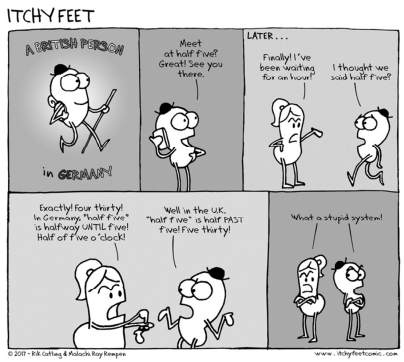Questões de Concurso
Para sme do recife - pe
Foram encontradas 680 questões
Resolva questões gratuitamente!
Junte-se a mais de 4 milhões de concurseiros!
Uma das competências prevista na BNCC é o reconhecimento da língua inglesa, por parte do estudante, como ferramenta de acesso ao conhecimento, de ampliação das perspectivas e de possibilidades para a compreensão dos valores e dos interesses de outras culturas bem como para o exercício do protagonismo social.
O componente curricular deve garantir que o estudante possa identificar o lugar de si e o do outro em um mundo plurilíngue e multicultural, sendo capaz de refletir criticamente sobre como a aprendizagem da língua inglesa contribui para a inserção dos sujeitos no mundo globalizado, inclusive no que concerne ao mundo do trabalho.
Judge the following item, related to the vocabulary and to the grammar in the precedent text.
In “users’ feelings” (last paragraph), because “users” is a
plural noun ending in -s, it would also be correct to indicate
the relationship of possession with users’s feelings.
Judge the following item, related to the vocabulary and to the grammar in the precedent text.
In the third paragraph, “conducted” is used in combination
with “research”, and may be correctly replaced by carried
out without this changing the meaning of the sentence.
Judge the following item, related to the vocabulary and to the grammar in the precedent text.
The pronouns “their” and “them” in “their interest in
purchasing them”, in the last paragraph, stand for “users”
and for “devices such as digital voice assistants”,
respectively.
Judge the following item, related to the vocabulary and to the grammar in the precedent text.
The word “Removing” in the beginning of the third
paragraph, is an example of how a verb can be turned into a
noun in English.
Judge the following item, related to the vocabulary and to the grammar in the precedent text.
In the second paragraph, the word “since” determines the use
of the present perfect continuous in “There have been
concerns”.
Judge the following item, related to the vocabulary and to the grammar in the precedent text.
With the passage “unveiled a gender-neutral option”, in the
first paragraph, the author informs that Apple’s Siri had such
an option already, but it was difficult for users to find it.
Judge the following item, related to the vocabulary and to the grammar in the precedent text.
In the first paragraph, the word “humanlike” can be correctly
replaced by humane without this changing the meaning
relations in the paragraph.
Judge the following item, about the vocabulary and the grammatical features of the text.
In “Separate indigenous language educational institutions”
(last paragraph), the use of “Separate” indicates that the
educational institutions should be independent and
autonomous educational units.
Judge the following item, about the vocabulary and the grammatical features of the text.
The excerpt “a decrease in youth suicide by 50% a year”
(end of the second paragraph) can be correctly replaced by a
50-per-cent-a-year decrease in suicide among youth.
Judge the following item, about the vocabulary and the grammatical features of the text.
In the second sentence of the second paragraph, “who are
capable of speaking their native language” restrains the
meaning of “Aboriginal youth” and cannot be omitted
without this changing the meaning of the sentence.
Judge the following item, about the vocabulary and the grammatical features of the text.
Because the expression “concerted efforts” is used in the last
sentence of the text, it can be said that initiatives or measures
that were once ineffective, went through improvement, and
are presently adequate and successful.
Judge the following item, about the vocabulary and the grammatical features of the text.
In the first paragraph, if the authors qualified “native
language” as Asian, primaeval, guttural and beautiful, the
correct order of such adjectives would be: beautiful Asian
guttural primaeval native language.

Judge the following item considering the comic strip.
Speaking the same language does not guarantee a cultural
conflict-free encounter between people from different
communities.

Judge the following item considering the comic strip.
One of the characters needs to go back to learn how to read
the time on a watch.

Judge the following item considering the comic strip.
Cultural differences may lead to problems even between
people coming from the same continent.
Judge the following item concerning text 7A2.
In the beginning of the second paragraph, the word “this”
stands for the information given immediately before about
no language spoken today being primitive.
Judge the following item concerning text 7A2.
In the last sentence of the first paragraph, using “are
reported”, the author means that the Agta people themselves
have studied their vocabulary on fishing.
Judge the following item concerning text 7A2.
In “play no part in their culture?”, the word “part” could be
replaced by role or act without any change in the meaning of
the sentence.